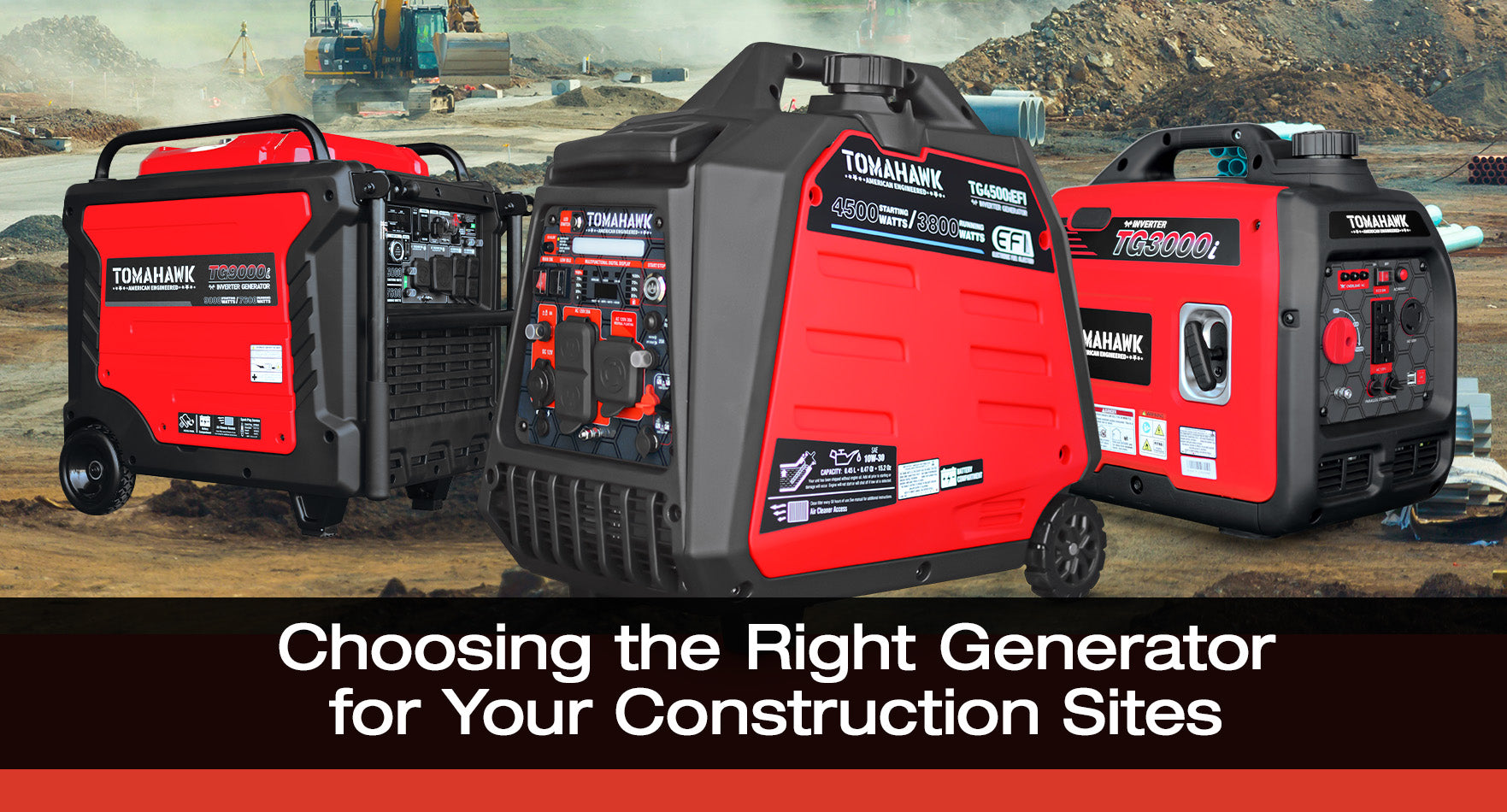What Size Generator for a Construction Site?
Choosing the right size generator for a construction site is crucial to ensure smooth operations and avoid downtime. Here, we'll explore the key considerations and steps to determine the optimal generator size for your construction needs.
Understanding Power Requirements
-
Identify Equipment and Tools: Begin by listing all the equipment and tools that will be used on the construction site. Common tools include concrete mixers, air compressors, welders, saws, drills, and lighting systems. Each piece of equipment has a specific power requirement, usually indicated in watts (W) or kilowatts (kW).
-
Calculate Total Power Consumption: Sum up the power requirements of all the equipment. This involves adding the wattage of each tool. For instance, if you have a concrete mixer (1,000W), a saw (1,500W), and a lighting system (500W), the total power requirement would be 3,000W (or 3kW).
Types of Power Needs
-
Continuous vs. Peak Power: Differentiate between continuous and peak power needs. Continuous power is the steady amount of electricity required to run equipment, while peak power (also known as surge power) is the extra power needed when starting up certain tools. Generators should handle both these demands.
-
Factor in Starting Watts: Some tools require higher power at startup. For example, an air compressor might need three times its running watts to start. Ensure your generator can handle these surge requirements. If an air compressor runs at 1,200W but needs 3,600W to start, this surge capacity must be included in your calculations.
Selecting the Right Generator Size
-
Consider Total Wattage: After calculating the continuous and peak power needs, choose a generator that can comfortably provide this power. It’s advisable to add a 20-30% margin to your total wattage calculation to account for unforeseen power demands and to ensure efficient operation.
-
Portability and Fuel Type: Depending on the construction site's size and setup, you might need a portable generator for easy movement or a stationary one for larger, more permanent setups. Also, decide on the fuel type—diesel, gas, or propane—based on availability and cost.
Example Calculation
Suppose your site uses the following equipment:
- Concrete Mixer: 1,000W (1,500W startup)
- Air Compressor: 1,200W (3,600W startup)
- Circular Saw: 1,500W
- Lighting System: 500W
Total Running Watts: 1,000 + 1,200 + 1,500 + 500 = 4,200W
Total Starting Watts: 1,500 (mixer) + 3,600 (compressor) + 1,500 (saw) = 6,600W
Here, the generator should support 4,200W continuously and handle 6,600W surge power. Adding a 30% buffer, the ideal generator size would be around 5,460W (continuous) and 8,580W (surge).
Conclusion
Choosing the right size generator involves understanding your total power needs, considering both continuous and peak demands, and selecting a generator with a comfortable margin above these requirements.
By following these guidelines, you can ensure that your construction site remains powered and efficient, minimizing downtime and maximizing productivity.










